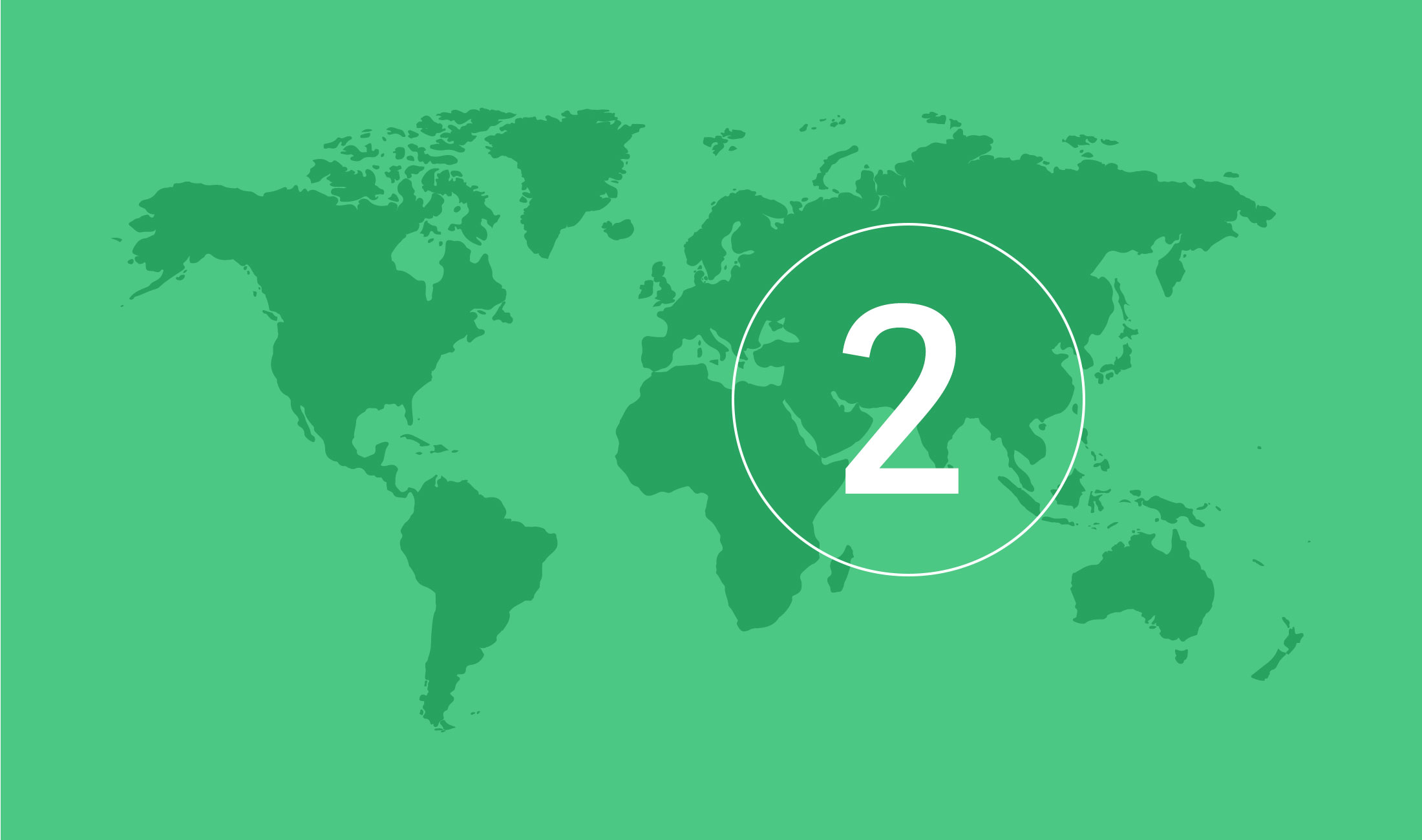
Chile
Category
2 of 7
| Risk type | Short | Long |
|---|---|---|
| Sovereign | ||
| Public | ||
| Bank | ||
| Corporate |
The icons indicate EKN's risk assessment.
A lower country risk category means a lower country risk. The icons mark EKN's ability to cover risks to different buyers in the country.
-
No policy established
- EKN has not analysed this country recently and therefore has no current opinion. If an exporter submits an application for such a country, EKN performs an analysis of the country at short notice and determines a policy.
-
Normal risk assessment
- EKN decides on guarantee issue based on an assessment of risk in the transaction. There are no predefined restrictions in the risk assessment or assumptions for risk assessment.
-
Restrictive risk assessment
- EKN sets stricter requirements in the risk assessment in order to guarantee a transaction. EKN may have specified special criteria that are key to the risk assessment of the guarantee holder category in question. This may mean that EKN sets a requirement that the counter party must have its own hard currency earnings or that external support can be expected, or that EKN sets a requirement for a letter of credit, government or bank guarantee. If the formulation of the transaction deviates from a defined restriction, we normally set more stringent conditions and may in the worst case refuse to guarantee the transaction. More stringent conditions may be that we reduce the sum guaranteed, raise the premium or require some form of security.
-
Normally off cover
- Here EKN does not normally cover currency transfer risks. However in some circumstances EKN may be able to go further with high risk countries than the restrictions of the country policy indicate. The application is then tested under the so-called GSL facility, which refers to guarantee issue with special country evaluation. There are specific requirements for this, primarily that the exporter has experience of the market in question. The risk is then shared with the exporter and by means of a mark-up on the premium.
-
OECD or EU countries
- Because of EU rules, EKN cannot issue guarantees for transactions with a risk period of less than two years for exports to Australia, EU countries, Iceland, Japan, Canada, Norway, New Zealand, Switzerland or the USA. If you have any questions, please telephone us on +46 8-788 00 00.
Country risk analysis
Country risk analysis archive
Country Risk Analysis of Chile
The latest Country Risk Analysis of Chile was issued in October 2022.
The metals of the future are in Chile
Chile is Latin America’s fifth-largest economy in terms of GDP despite a population of only about 20 million. Indeed, since the restoration of democracy in the early 1990s, the country has enjoyed steady growth, averaging 3.6% per year in the 2000s.
This growth has led to a reduction in the number of people living below the poverty line from 36% to 11% (over the same period). GDP per capita (in purchasing power-adjusted terms) in 2021 was just under USD 27,000, the highest in the region and the result of, inter alia, predictable and investment-friendly economic policy.
The economy is dominated by a growing services sector that employs approximately 70 per cent of the workforce. Meanwhile, Chile’s exports account for about 30 per cent of GDP and more than half are copper products, followed by food. Chile has more than one-third of the world’s known copper reserves, as well as large deposits of lithium and other minerals.
As both lithium and copper are so-called “green metals,” which means that they are regarded as playing an important role in the transition to a fossil-free energy supply, exports are expected to benefit from continued strong global demand over time. In line with the trend in other Latin American countries, China has become an increasingly influential trading partner.
In 2020, 38 per cent of exports went to China, compared to 23 per cent ten years earlier. While the long-term prospects for the country’s commodity exports are considered favourable, the concentrated export base also means that the country is exposed to fluctuating commodity prices and demand from China.
The country’s external balances have gradually weakened, as exemplified by Chile’s external debt, which in 2021 was equivalent to 75 per cent of GDP, while in 2011 it was only 40 per cent. In the years to come, current account deficits are expected to reach almost four per cent of GDP, while only about one quarter is expected to be covered by foreign direct investments.
However, the continued large foreign assets of the pension system and a standing credit facility from the IMF, equivalent to 50 per cent of the country’s foreign exchange reserves, reduce external risks.
For a long time, Chile’s country risk category has also been based on the country’s strong and independent institutions, stable macroeconomic frameworks centred around an inflation target and a floating exchange rate. A further strength has been the broad policy consensus that has characterised public finance policy making, resulting in limited fiscal deficits and manageable government debt over many years.
Over the past decade however, the public finance position has gradually deteriorated, albeit from a strong starting point. As an example of this, by 2021 government debt had increased to an amount corresponding to 36 per cent of GDP, a threefold increase in the ratio compared to ten years earlier.
Financial challenges await the new President
Growth in 2021 amounted to 11.7 per cent, more than compensating for the pandemic-related GDP decline of 6.1 per cent in the previous year. The recovery was driven by private consumption stimulated by public support programmes (equivalent to 11 per cent of GDP), the enabling of early withdrawal of pension contributions, and the easing of quarantine restrictions.
In total, the government stimulus during the year amounted to 25 per cent of GDP. For 2022, GDP growth is expected to slow markedly to just below two per cent. In 2023, GDP is expected to stagnate as demand slows due to rising inflation and increasingly contractionary fiscal and monetary policies.
In 2019, Chile was marked by nationwide and sometimes violent public protests. In the aftermath of these events, the political debate has focused on addressing the protesters’ demands for increased social spending, which include improved access to education, healthcare and housing. The pandemic further increased expectations on the public system which, in addition to substantial fiscal stimulus packages, resulted in efforts to draft a new constitution.
Meanwhile, in March 2022, Gabriel Boric took office as the country’s new President. His inauguration has coincided with a period of significant uncertainty linked to the outcome of the constitutional reform process and the uncertain outlook for the global and Chilean economy in general. In September 2022, the proposed new constitution was ultimately rejected in a referendum with 62 per cent of the population voting against it.
The government has indicated that it intends to draft a new constitution, a process that is likely to last through 2023 and potentially beyond. As a result, investment appetite may be expected to be lower, pending further clarity on what the revised draft constitution may entail. It will be a challenge for President Boric and future governments to manage these tensions between the population’s increased demands for social reforms while maintaining the soundness of public finances.
Business environment
Chile is an open economy with strong democratic institutions, making it one of the most attractive countries in Latin America for investments. A major advantage is the relatively low crime rate (compared to other countries in the region), a high degree of rule of law along with historically good growth.
Access to financial information about private buyers is good, and open account import is common. Letters of credit are rare. In a relatively mature market such as Chile, demand for services from EKN is limited. In the World Bank’s latest Ease of Doing Business Index, Chile ranks 59th (out of 189 countries) and is the top country in the region.
The ranking would be higher if not for a general Latin American problem, namely the sluggish judicial system (even if it is less pronounced in Chile). In relation to other aspects of the business environment, such as legal certainty, corruption control and transparency, the country is in line with other OECD-countries.
Chile is an institutionally highly developed country, where leading institutions such as the Ministry of Finance, the Central Bank and the financial supervisory authority have a very good reputation. Chile has adopted open market policies, with few barriers to trade and investment – it has trade agreements with some 70 countries, which together account for 88 per cent of global GDP.
The balance sheets of banks and other financial institutions are sound. The financial sector is generally characterised by strong risk management capacity, diversified asset portfolios and conservative lending practices. Capital adequacy ratios are satisfactory and are expected to remain solid in the face of rising margins due to higher interest rates and inflation and a slowdown in credit growth in 2023.
The ratio of non-performing loans averaged 1.3 per cent (at the beginning of 2022), the lowest level ever. In 2023, the sector regulator has announced that it will have fully implemented the Basel III regulatory framework.
EKN's policy
EKN has ranked Chile in country risk category 2 (out of 0 to 7) since the year 2000. Usual risk assessment applies to transactions with the Ministry of Finance, other public sector buyers, banks and companies. This means that there are no predetermined restrictions for the issuance of guarantees and that each transaction is assessed on its own merits without any specific requirements or preconditions.
EKN's commitment and experience
EKN's payment experience in Chile is overall good. It is clear that the Government is keen to maintain good relations with its creditors. EKN’s outstanding guarantees for transactions in Chile amount to SEK 1.3 billion and consist mainly of guarantees for export of buses to the public transport system followed by the paper and pulp industry. In 2021, 29 guarantees were issued with a total value of SEK 1.3 billion.
So far this year (January-August 2022), 14 transactions have been guaranteed at a total value of SEK 1.1 billion. This is a decrease in the number of transactions but an increase in terms of the amount compared to the same period in 2021 (16 transactions at a value of SEK 860 million). Over the past five years, EKN has guaranteed an average of 35 transactions per year with an annual value of SEK 1.1 billion.
Arrears amounting to SEK 3 million are spread out over a handful of transactions. Outstanding claims amount to SEK 51 million and are attributable to commercial indemnifications in twelve transactions entered into between 2009 and 2020.
More for companies that want to export to Chile

EKN's guarantees
EKN's guarantees reduce the risk of payment defaults and help banks support businesses. Which guarantee suits your needs?
EKN's guarantees
Guarantee guide
Are you unsure which guarantee is the best fit for your specific transaction? Try our guarantee guide.
Guarantee guide